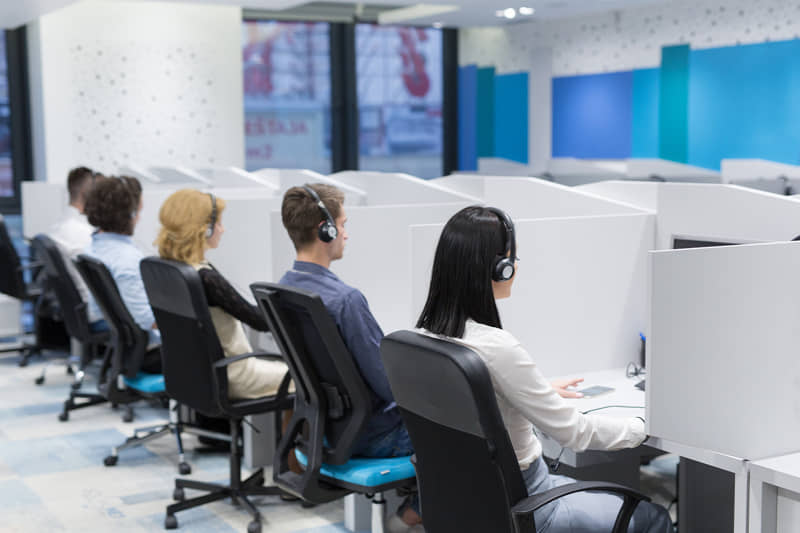
What Is Customer Experience Management
Customer experience management (CXM) is designing your customers’ journeys to meet (or exceed) their expectations of increasing their satisfaction and loyalty.
Customer relationship management is more than serving your business customers. It knows your customers so well that you deliver personalized experiences that make them love your brand and become your best marketers as brand advocates.
Customer experience management includes tracking analytics and getting feedback from all customer touchpoints and channels used across your entire organization. The customer data you receive from your research allows you to create the experience your customers want and need to be completely satisfied.
Customer experience management (which you might see styled as both CEM or CXM) is a critical aspect of modern business. This field is focused on understanding and meeting customer needs to foster brand loyalty and improve bottom-line profitability.
It involves mapping the customer journey from end to end, tracking all customer touchpoints, and using customer data to deliver personalized experiences. In short, good CXM software provides valuable customer insights that can transform the way a business interacts with its existing customers.
The Role of Digital Transformation in CEM
With the rise of digital transformation, businesses are utilizing the latest customer experience management software, apps, and other technologies, such as machine learning and chatbots, to automate workflows, enhance functionality, and provide real-time customer interactions.
These technologies also help in breaking down silos within the organization to deliver an omnichannel brand experience. The providers of these management platforms play a crucial role in driving digital transformation.
What Is Customer Relationship Management (CRM)?
Customer relationship management (CRM) is an integral part of CEM. CRM platforms track customer profiles and interactions across various channels, including social media, mobile apps, and contact centers, providing a deeper understanding of customer needs and expectations.
CRM also focuses on attracting new customers and retaining existing ones, reducing customer churn and boosting business profitability. The voice of the customer is central to effective CRM, guiding businesses in their customer-focused strategies.
Why Are Customer Feedback and Success Metrics Important?
A good customer experience management strategy also involves continuously gathering customer feedback through various tools like customer satisfaction surveys and net promoter scores (NPS).
This helps companies measure customer engagement and loyalty, identify areas of improvement, and make informed business decisions. These success metrics play a crucial role in assessing the success of customer experience management initiatives, helping businesses to continuously refine their strategies.
What Is Customer Experience Management?
You might have a basic understanding of CXM, but what does it actually do? What goes into managing a good customer experience? Let’s break it down.
Employee Experience and Customer Advocacy
Customer-centric organizations also focus on employee experience, recognizing that happy employees deliver better customer service. They invest in training and rewarding their staff, fostering a culture of customer advocacy within the organization. Ensuring a positive employee experience is pivotal to delivering a great customer experience and driving brand loyalty.
Marketing Automation and Customer Segmentation
Marketing automation is another aspect of successful customer experience management. It helps in customer segmentation, targeting customers with relevant content and offers, and tracking metrics to assess the effectiveness of marketing efforts. With marketing automation, businesses can deliver a more personalized and seamless customer journey, enhancing customer satisfaction and loyalty.
Customer Loyalty Programs and Customer Retention
Customer loyalty programs are an integral part of CEM, incentivizing repeat purchases and fostering long-term relationships with customers. These programs are a powerful tool for customer retention and advocacy, encouraging loyal customers to become brand advocates, which can attract new customers and boost business growth.
How Does Pricing Affect Customer Experience?
Pricing is another key factor influencing the customer experience. Companies need to ensure their pricing is competitive while still offering a great customer experience. This balance can be achieved through regular market research and customer feedback, ensuring that pricing strategies align with customer expectations and perceptions of value.
Enhancing the Digital Experience
In the era of digital experience, companies need to ensure their websites and mobile apps are user-friendly and offer seamless customer support. This includes having chatbots for real-time assistance and conducting webinars for customer education. A positive digital experience can significantly enhance customer satisfaction and loyalty.
The Power of Customer Journey Mapping
Customer journey mapping is a valuable tool in CEM, providing a visual representation of the customer lifecycle across all touchpoints. This helps in identifying gaps in the customer experience and opportunities for improvement. By understanding the customer's journey, businesses can tailor their services and interactions to meet customer needs more effectively.
Continuous Effort and Adaptation in CEM
Successful customer experience management requires continuous effort and adaptation. Companies need to regularly review their CEM strategies, tweak their metrics, and stay up-to-date with the latest trends and best practices. This continual refinement ensures that businesses can adapt to changing customer expectations and deliver a consistently high-quality customer experience.
The Bottom Line
Customer experience management is not just about meeting customer expectations but exceeding them. It involves a holistic approach, integrating various aspects of the business, from CRM to marketing automation, to deliver a positive customer experience.
It's about putting the customer at the heart of the business and making every interaction count. By investing time and resources into CEM, businesses can build a loyal customer base, boost their bottom line, and ensure long-term success.
Are you ready to wow your customers with an awesome experience? If the answer is yes, contact Awesome CX today, and we’ll demonstrate our approach.
Sources:
Customer Engagement In 2023: The Ultimate Guide | Forbes Advisor
Research: How Employee Experience Impacts Your Bottom Line | Harvard Business Review
What is Digital Experience and How Does it Work? | IBM
What Is A Customer Journey Map And Why Are They Important? | Linked In























